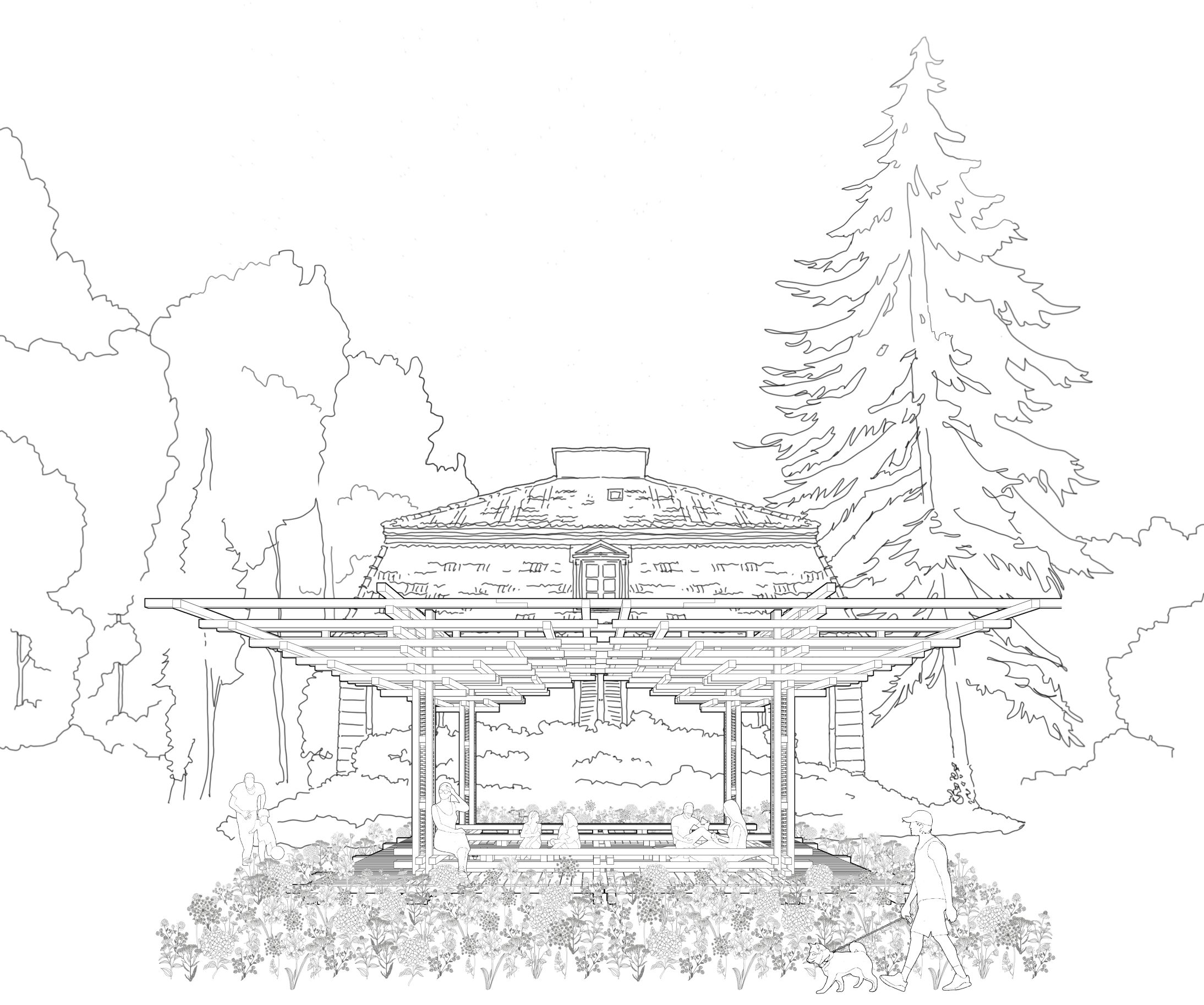Pavilion of the Future - the second edition of the "Erecting it_" project
For the second time, students and lecturers of the Faculty of Architecture of the Warsaw University of Technology have created a unique object in the Royal Łazienki Park. This time, as part of the 'Erecting it_' project, the Pavilion of the Future was created, which can be visited from 16 June to the end of November in the Garden behind the Hermitage.
The pavilion was designed and built by WAPW students as part of the design classes of the A3 specialisation Architecture of Technology and Structure, conducted under the direction of Anna Wierzbicka, Professor at WUT. The work was carried out in cooperation with the Royal Lazienki Museum and partners, without whom the pavilion could not have been built. 23 architecture students worked in pairs to create design concepts. From these, one was selected which, according to the students, best reflected the idea of the future, which is the watchword for this year's project. The pavilion was created as a symbol of the coming challenges and hope for the years to come. Designed by students with passion and commitment, it is a manifestation of their vision of the future - dynamic, innovative and open to change.
For the creators, an important aspect is social connections, understood as the foundation for building the future. The pavilion is placed on a platform that serves as a place for visitors to meet, interact and integrate. Numerous seating and lying areas encourage visitors to talk, but also to rest and relax.
- The idea behind the pavilion is to foster social contact, even invite social contact, where visitors can relax and lie down among the flowering beds, which are open to human and non-human visitors such as spontaneous plant seedlings, insects and birds - explains Kinga Zinowc-Cieplik, PhD, from the project team.
The plan of the building is based on a square, which symbolises balance and harmony. Its roof is made up of interlacing wooden beams, which give the structure lightness and elegance and symbolise the complex social bonds and cooperation between people. The pavilion is surrounded by low vegetation in shades of blue, purple and white.
Material of the Future
This year, the students tackled the material dimension of architecture - under the theme Challenge Architecture - Materials for the Future. It was important to refine the design in the context of environmental responsibility, its role in the circular economy, ensuring the well-being and health of users, as well as efficiency, quality and sustainability, without forgetting the modern perspective.
In the pavilion created by the students, in addition to the predominant wooden construction elements, there are also bricks made of a material that is not obvious, but environmentally friendly - mycelium (Micelium briks). It symbolises sustainability, the future of construction based on ecological materials and, at the same time, modernity and innovation, also emphasising the importance of caring for the environment. It is a material of the future that can revolutionise the way we build and think about architecture.
What was it like working on the design of the Pavilion of the Future?
The student group was divided into 3 teams: design, construction and promotion. The design work of the student group was carried out under the direction of Prof. Anna Wierzbicka's team, consisting of Maciej Kaufman, MSc, and Szymon Kalata, MSc, (architecture), Kinga Zinowiec-Cieplik, PhD, (integration with the surroundings, plant compositions), Mariusz Wrona, MSc, (construction), Paweł Trębacz, PhD (consultations).
- During the course, students learn how to implement a design and move on to the realisation stage. The project itself is already a major challenge. It is necessary to take care of arrangements with partners, supervisory services, make a reliable estimate of materials, refine the construction, clash with procurement deadlines and, of course, balance the expenses with the available budget, as well as establish a work schedule. The students then have to take care of the construction site, safety, determine the sequence of work and the number of workers needed, undergo health and safety training, see to the ordering and delivery of materials, learn - under the supervision of specialists - simple construction work, in this case carpentry, and finally take care of promotion - adds Kinga Zinowc-Cieplik.
The project was consulted with the Royal Lazienki Museum and the Provincial Conservator of Monuments with regard to the architectural form and protection of landscape values. With the active participation of students, the construction was carried out under the supervision of the entire team leading the architectural design in cooperation with external partners. The team was also supported by the staff of the Faculty of Geodesy and Cartography of the Warsaw University of Technology, delineating the project in the field.
For more information about the Pavilion of the Future and the team that makes it up, follow him on Instagram and the website.









